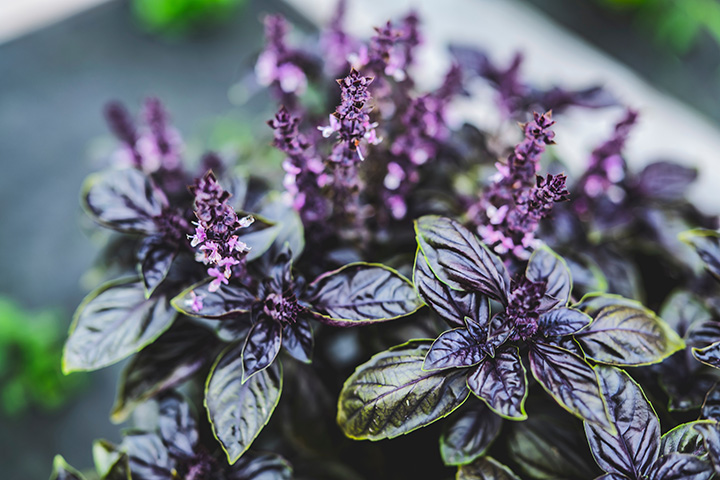Basil is one of the most beloved herbs in the culinary world, known for its aromatic leaves and versatility in the kitchen. With numerous varieties available, each type offers unique flavors, growth habits, and ideal uses. Whether you’re a home cook or an aspiring gardener, this guide will help you choose the right basil for your needs and grow it successfully.
1. Sweet Basil (Ocimum basilicum)
Flavor Profile: Classic, slightly sweet with a peppery undertone.
Best Uses: The star of Italian cuisine—perfect for pesto, Caprese salads, pasta sauces, and soups.
Growing Tips:
- Sunlight: Full sun (6–8 hours per day).
- Soil: Well-draining, fertile soil with a pH of 6.0–7.0.
- Watering: Keep soil moist but not waterlogged.
- Harvesting: Pinch off leaves regularly to encourage bushier growth.
2. Genovese Basil (Ocimum basilicum ‘Genovese’)
Flavor Profile: Stronger, more aromatic than sweet basil, with a slightly spicy note.
Best Uses: The gold standard for authentic Italian pesto, as well as tomato-based dishes.
Growing Tips:
- Similar to sweet basil but prefers slightly warmer conditions.
- Prune flower buds to prolong leaf production.
3. Thai Basil (Ocimum basilicum var. thyrsiflora)
Flavor Profile: Licorice-like, spicy, and slightly anise-flavored.
Best Uses: Essential in Southeast Asian cuisine—perfect for curries, stir-fries, and pho.
Growing Tips:
- Sunlight: Full sun to partial shade.
- Soil: Tolerates slightly drier conditions than sweet basil.
- Watering: Allow soil to dry slightly between waterings.
- Harvesting: Stems and leaves are edible; flowers are also used in cooking.
4. Purple Basil (Ocimum basilicum ‘Purpurascens’)
Flavor Profile: Similar to sweet basil but with a milder, slightly clove-like taste.
Best Uses: Adds vibrant color to salads, garnishes, and infused vinegars.

Growing Tips:
- Sunlight: Needs full sun for the deepest color.
- Soil: Well-draining, moderately fertile soil.
- Watering: Avoid overhead watering to prevent leaf spotting.
5. Lemon Basil (Ocimum basilicum ‘Citriodorum’)
Flavor Profile: Bright, citrusy, and mildly sweet.
Best Uses: Excellent in seafood dishes, teas, desserts, and summer salads.
Growing Tips:
- Sunlight: Full sun.
- Soil: Prefers slightly sandy, well-draining soil.
- Watering: Moderate; tolerates short dry spells.
6. Holy Basil (Tulsi) (Ocimum tenuiflorum)
Flavor Profile: Peppery, clove-like, with a hint of mint.
Best Uses: Sacred in Ayurveda—used in teas, medicinal remedies, and Thai cooking.
Growing Tips:
- Sunlight: Full sun to partial shade.
- Soil: Well-draining, slightly alkaline soil.
- Watering: Keep soil consistently moist.
7. Cinnamon Basil (Ocimum basilicum ‘Cinnamon’)
Flavor Profile: Warm, spicy, with a cinnamon-like aroma.
Best Uses: Great in baked goods, fruit salads, and herbal teas.
Growing Tips:
- Sunlight: Full sun.
- Soil: Rich, well-draining soil.
- Watering: Regular but not excessive.
General Basil Growing Tips
✅ Start Indoors: Begin seeds indoors 6–8 weeks before the last frost.
✅ Transplant Carefully: Move outdoors after the danger of frost has passed.
✅ Prevent Bolting: Pinch off flower buds to extend leaf production.
✅ Companion Planting: Grows well with tomatoes, peppers, and oregano.
Conclusion
Whether you’re making pesto, Thai curry, or herbal tea, there’s a basil variety suited for your needs. By selecting the right type and providing proper care, you can enjoy fresh, fragrant basil all season long. Happy growing—and cooking! With a little patience and attention, your basil plants will flourish, adding flavor to your dishes and delighting your senses. Remember to regularly harvest the leaves to encourage bushier growth and ensure a bountiful supply throughout the summer months.